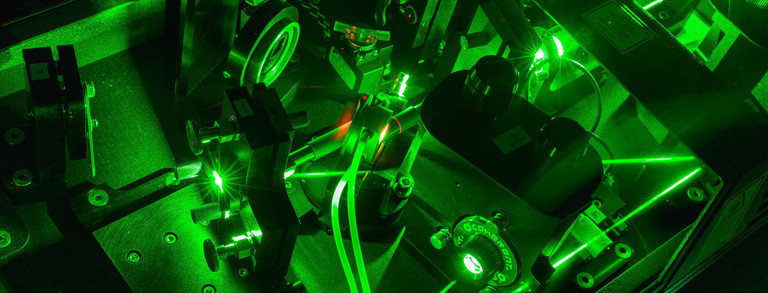Group Jörg Debus
The main vision of my research activities is to explore tribological surfaces&interfaces at the micro- and nanoscale and (magnetic) quantum materials by means of linear and non-linear laser spectroscopy.
The field of tribology is a highly innovative topic at the interdisciplinary interface of physics, chemistry, mechanical engineering, biology, and medicine, where intriguing novel phenomena await us. The elementary mechanisms of friction and wear phenomena comprise both structural-mechanical as well as physical-chemical quantities and will be evaluated from interatomic and intermolecular interactions. In situ and operando sensing of tribological surface properties and dynamics shall be realized by tailored laser spectroscopic methods.
Additionally, quantum materials, in particular magnetic transition metal dichalcogenides and two-dimensional lanthanide heterostructures demonstrate emerging quantum phenomena. In this context, I focus my research on revealing fundamental spin interactions as well as on realizing (quantum) sensors for probing a diverse set of quantities with highest sensitivity and robustness, both at room as well as cryogenic temperatures.
These two central work streams rely on joint techniques of linear and non-linear laser spectroscopy: Besides regular and upconverted photoluminescence, Faraday rotation, (non-)resonant Raman scattering as well as Brillouin interferometry, tip-enhanced emission and stimulated light scattering based on supercontinuum generation with fs-laser pulses will open new possibilities in my fundamental and application-oriented research on novel tribological and semiconducting materials.
Interested in a Bachelor-, Master- or PhD-thesis?
Please feel free to contact Jörg Debus via Email or visit his office CP-01-191.
Recent Publications
- Acta Biomaterialia 189, 621 (2024): Protein-metal interactions due to fretting corrosion at the taper junction of hip implants: An in vitro investigation using Raman spectroscopy, https://doi.org/10.1016/j.actbio.2024.10.006
- ACS Appl. Mater. Interfaces 16, 54818 (2024): Spectroscopic Study of Strain, Oxidation, and Formation of Few-Layer Graphene at Steel Surfaces Tribologically Tested against MoS2 Films, https://doi.org/10.1021/acsami.4c11016
- J. Phys. Chem. Lett. 14, 8702 (2023): Biexciton and Singlet Trion Upconvert Exciton Photoluminescence in a MoSe2Monolayer Supported by Acoustic and Optical K-Valley Phonons, https://doi.org/10.1021/acs.jpclett.3c01982
Group members
PhD students:
- Gabriel Brune
- Nils Denkmann
- Steven Nicolai
- Merve Seren
Master students:
- Donita Delijaj
- Lasse Leukefeld
Supervision of external PhD students:
- Florian Preischel (RUB)
Alumni
M. Sc. Katja Barthelmi
M. Sc. Christian Beckmann
Dr. Dion Braukmann
M. Sc. Saskia Heermant
Dr. Dennis Kudlacik
Dr. Henning Moldenhauer
M. Sc. Julian Schröer
Dr. Carl-Arne Thomann
M. Sc. Philipp Waldkirch
Dr. Adrian Wittrock



